Stardust: Sin City once welcomed road racing’s best to the desert
(While researching a Ford GT40 Mk IV that was converted into an open-cockpit racer, I discovered a trove of monochrome shots from a 1966 Can-Am event at Stardust International Raceway in Las Vegas, Nevada. The collection of photographs sent me down a rabbit hole and hoovered most of an afternoon. Enjoy! -Cameron)
Construction equipment clatter is part of the Las Vegas Strip symphony, as high rises are born, refurbished, demolished, and then replaced with even larger hotels, theme parks, and resorts. A new build site on the backside of the casino row promises a different structure—one that is completely novel to a city that’s seen it all. At the corner of Koval and Harmon, a 39-acre plot which once contained a dilapidated nightclub and abandoned parking lot rubble has been cleared to make way for a multi-level Formula 1 paddock.
In November, the F1 circus will invade Sin City, its star racers competing under the halogen glow of a brand-new street course. The scale is hard to grasp. By the time the Las Vegas Grand Prix weekend starts, F1 and its parent company Liberty Media will have spent an estimated $500 million. The property at Koval and Harmon alone cost the firm $240 million. Despite experts anticipating the Vegas GP to be the most expensive sporting event to attend in 2023, F1 expects an estimated 100,000 ticketed fans per day throughout race weekend.
The course layout is part of the excitement surrounding the race. A portion of the 14-turn, 3.8-mile track will utilize the Vegas Strip.
While racing on the neon artery is a new endeavor, racing in Las Vegas is not. For decades, Sin City has hosted numerous auto races, from the Formula 1 grand prix in the parking lot of the Caesar’s Palace to the short-lived Stardust International Raceway.
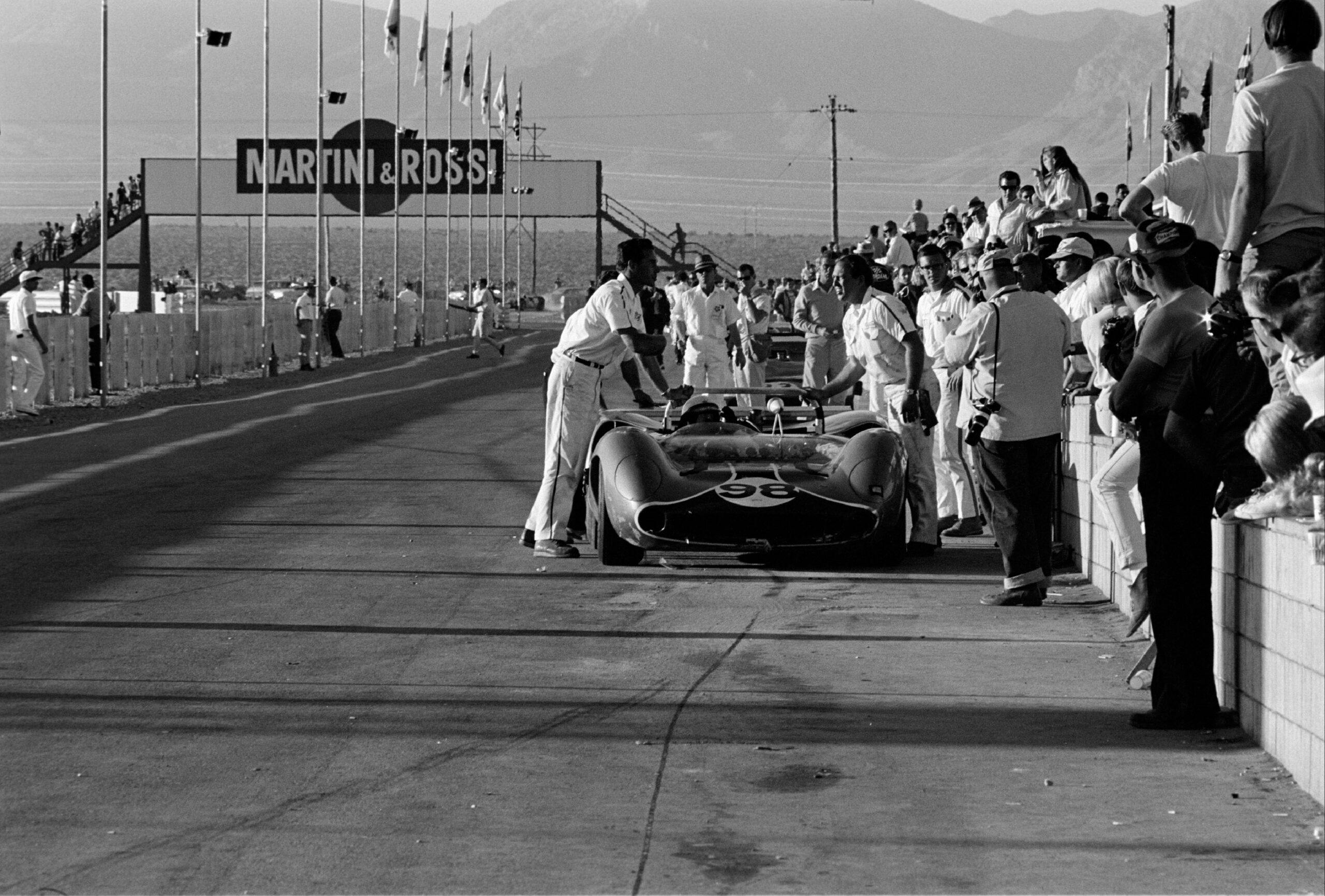
Stardust, named after the Las Vegas resort that funded the effort, was built in 1965 as means of attracting big money and a bright spotlight to the hotel and its hometown. In an area called Spring Valley, just to the west of the Strip, the three-mile 13-turn road course and a front stretch that doubled as a quarter-mile dragstrip hosted United States Road Racing Championship (USRRC), Can-Am, Trans-Am, USAC Indy Cars, and NHRA competition.

As you can imagine, a mecca of speed and sport built on the outskirts of Sin City may also attract some unsavory characters. Its tumultuous beginnings were extensively researched and written about in the 2018 book Stardust International Raceway: Motorsports Meets the Mob in Vegas, 1965-1971.
According to the authors, Stardust was established by a notorious racketeer. Wiretaps, casino skimming, Howard Hughes, and the beginnings of Watergate could all be traced back to the raceway and its operators.
The racing, on the other hand was legendary. International-level road racing talent clashed on the course. Hap Sharp took the first race in a Chaparral. John Cannon and John Surtees won the next year. And in 1967, Mark Donahue swept the Can-Am and Trans-Am races driving for Roger Penske. In 1968, Bobby Unser won in a rare open-wheel race two months before he won his first Indy 500. For five years, giants came to the desert and left with hardware.

This particular set of photos, shot by two greats, Bob D’Olivo and John Ethridge, captures the 1966 Can-Am race at Stardust, and serves as a time machine to the salad days of big-engine American sports car racing. Bowtie power, connecting rods, and primordial aerodynamic devices.
The Can-Am series was just taking off, and while most of the pack resembled muscle-bound versions of 1950s fiberglass road racers, there were hints of what was to come, such as the two white Chaparrals that sported upside down airplane wings seemingly mounted on popsicle sticks.
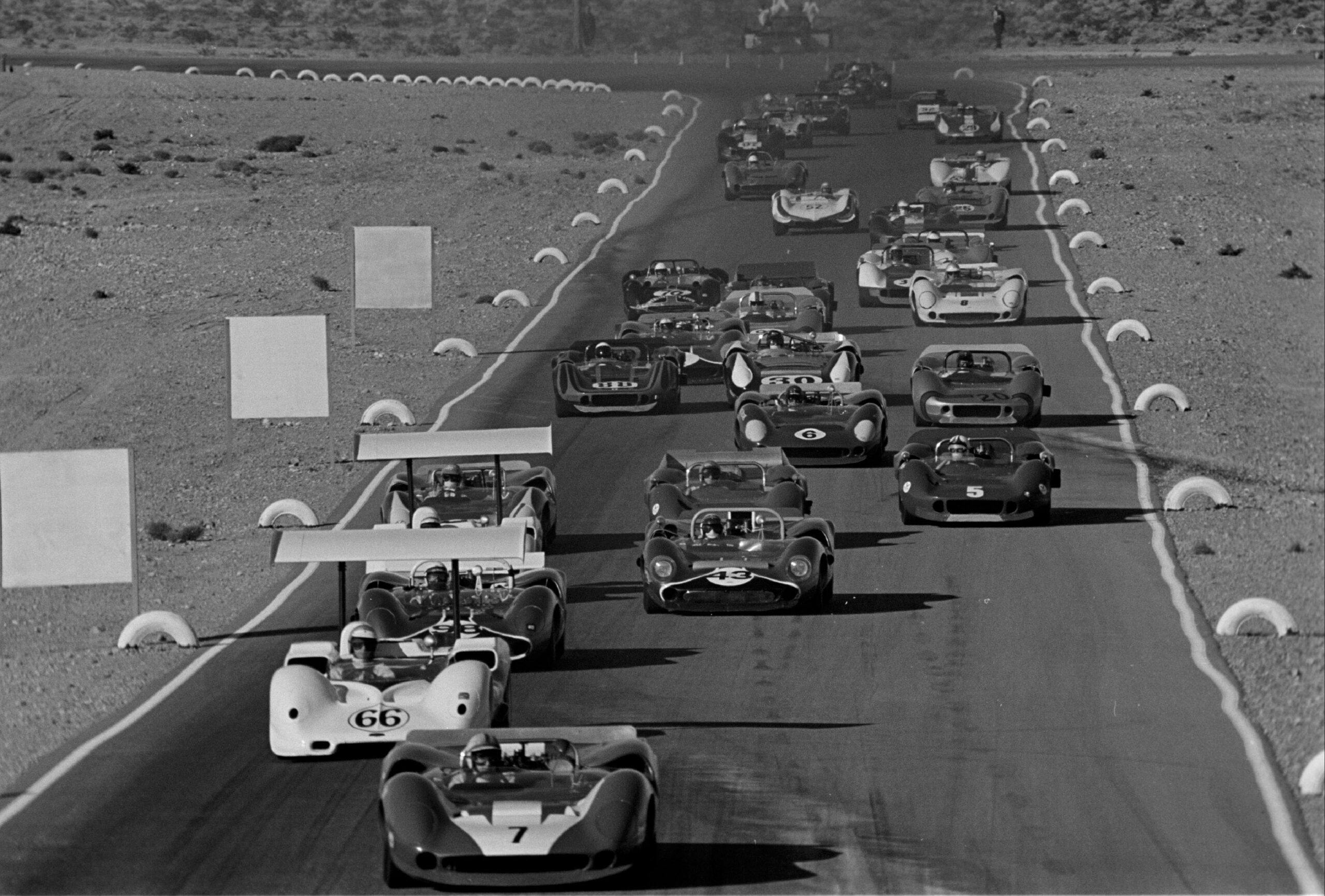
Out front of the gaggle, John Surtees—a British madman who won in anything with wheels, amassing seven Grand Prix motorcycle racing championships and a Formula 1 championship (1964) driving for Ferrari. Surtees won the ’66 Can-Am meet in Vegas, aboard an open-cockpit Lola T70.
The Can-Am race looks like a regional autocross event compared to a modern F1 race. The track is but a strip of meandering tar over the desert floor and race cars are strewn about the paddock with minimal tents, trailers, or ropes. There are hardly any structures save for a bit of fencing along the front stretch and a Martini & Rossi-sponsored pedestrian bridge.
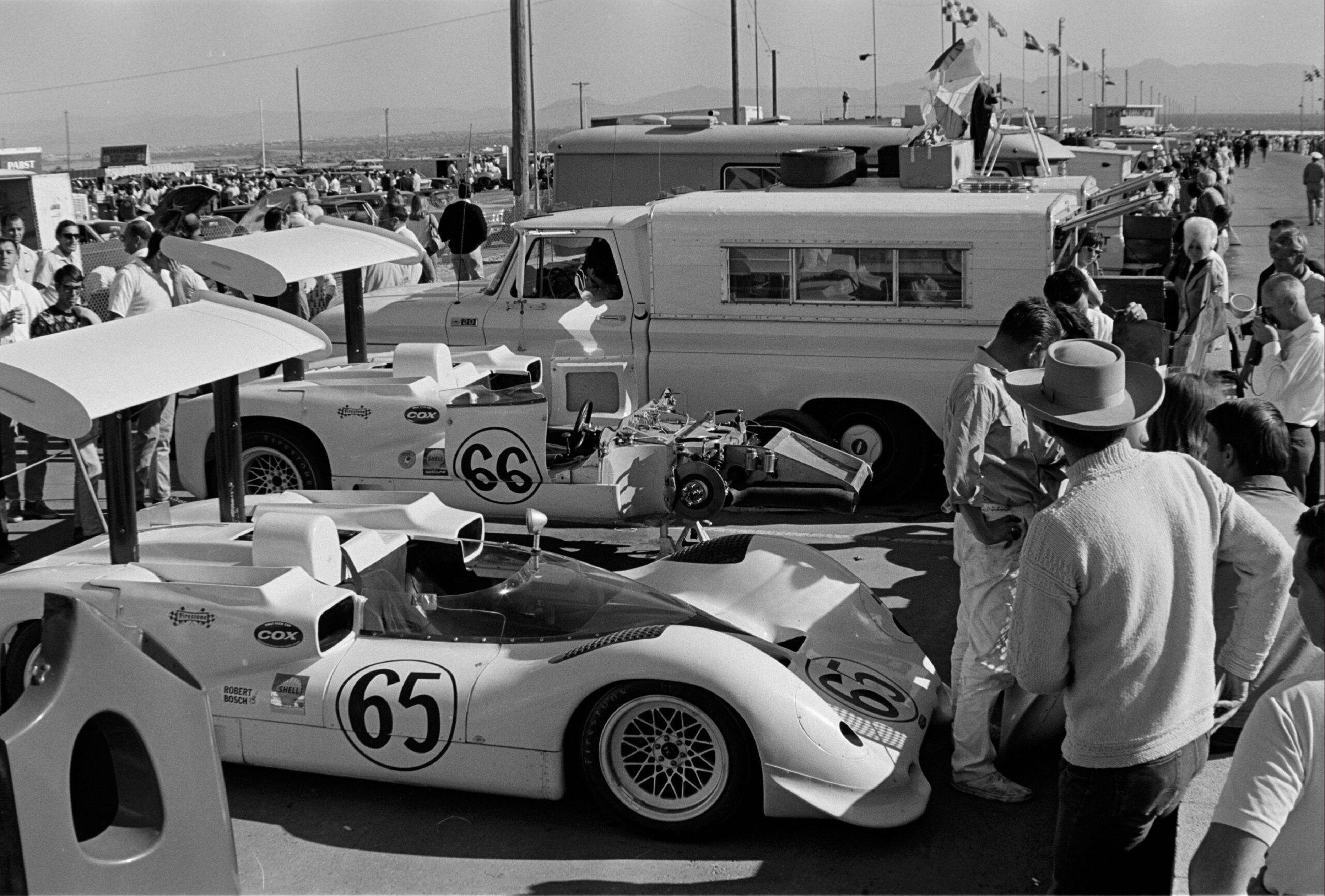
The track closed in the early 1970s and is long lost to land development. Now, Spring Valley is subdivisions and convenience stores. This November, a few miles to the east of this commercial congestion, the lights will go out on the grid and a new era of Las Vegas racing will begin.

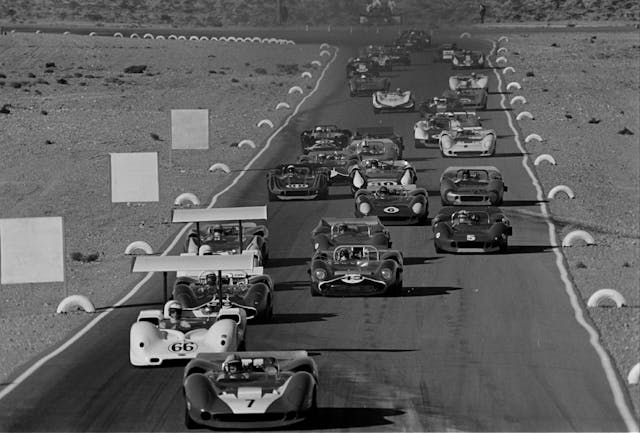
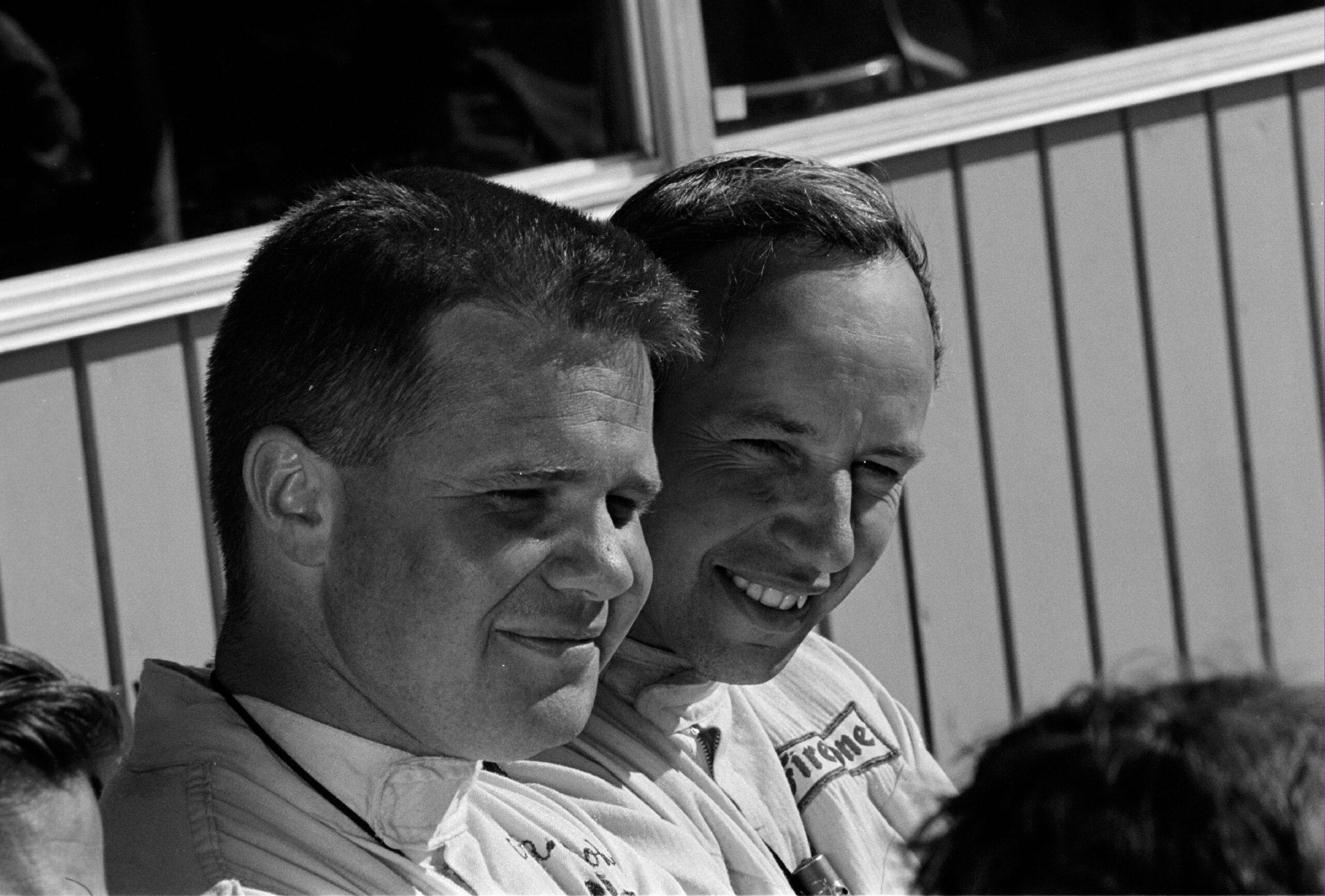
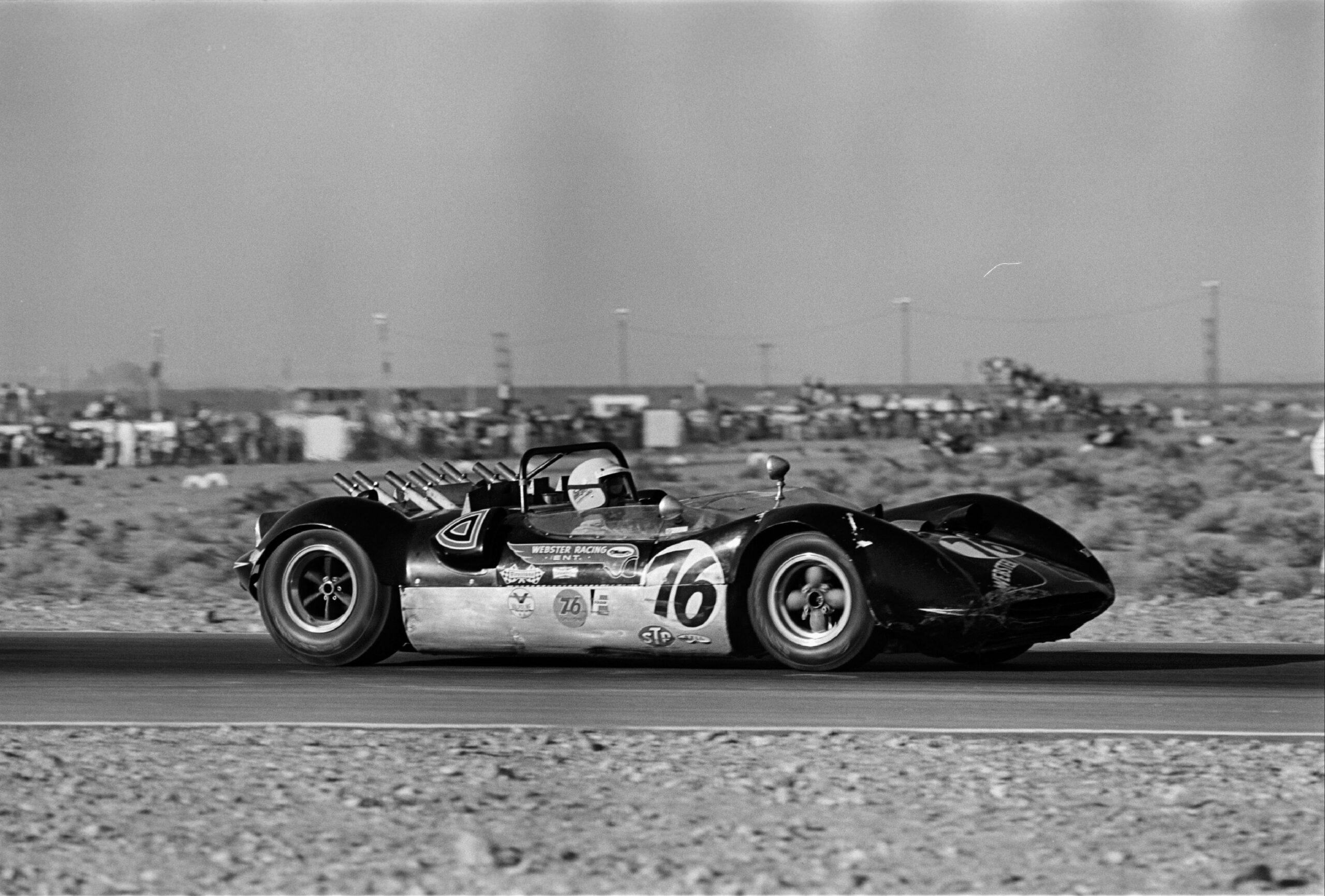
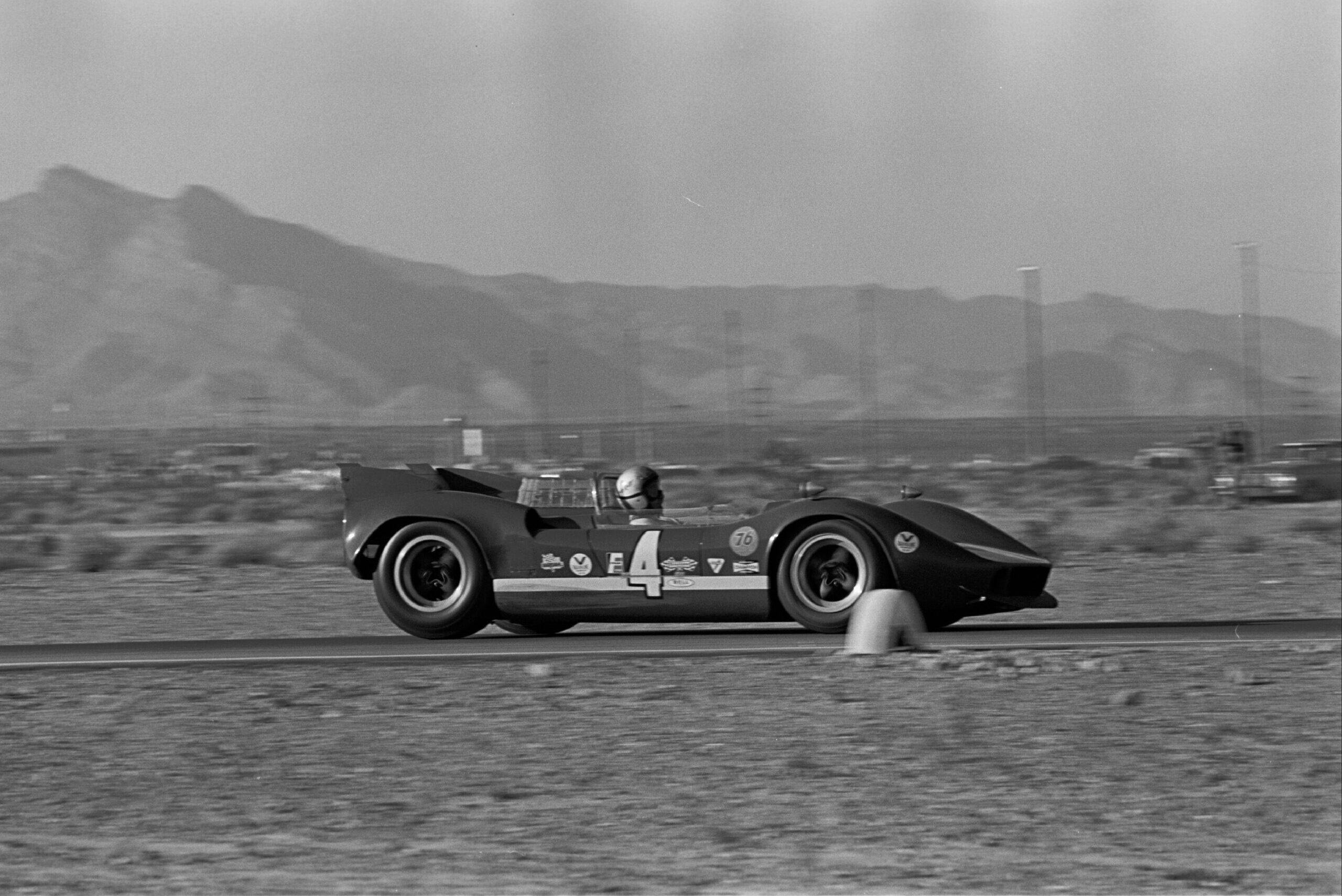
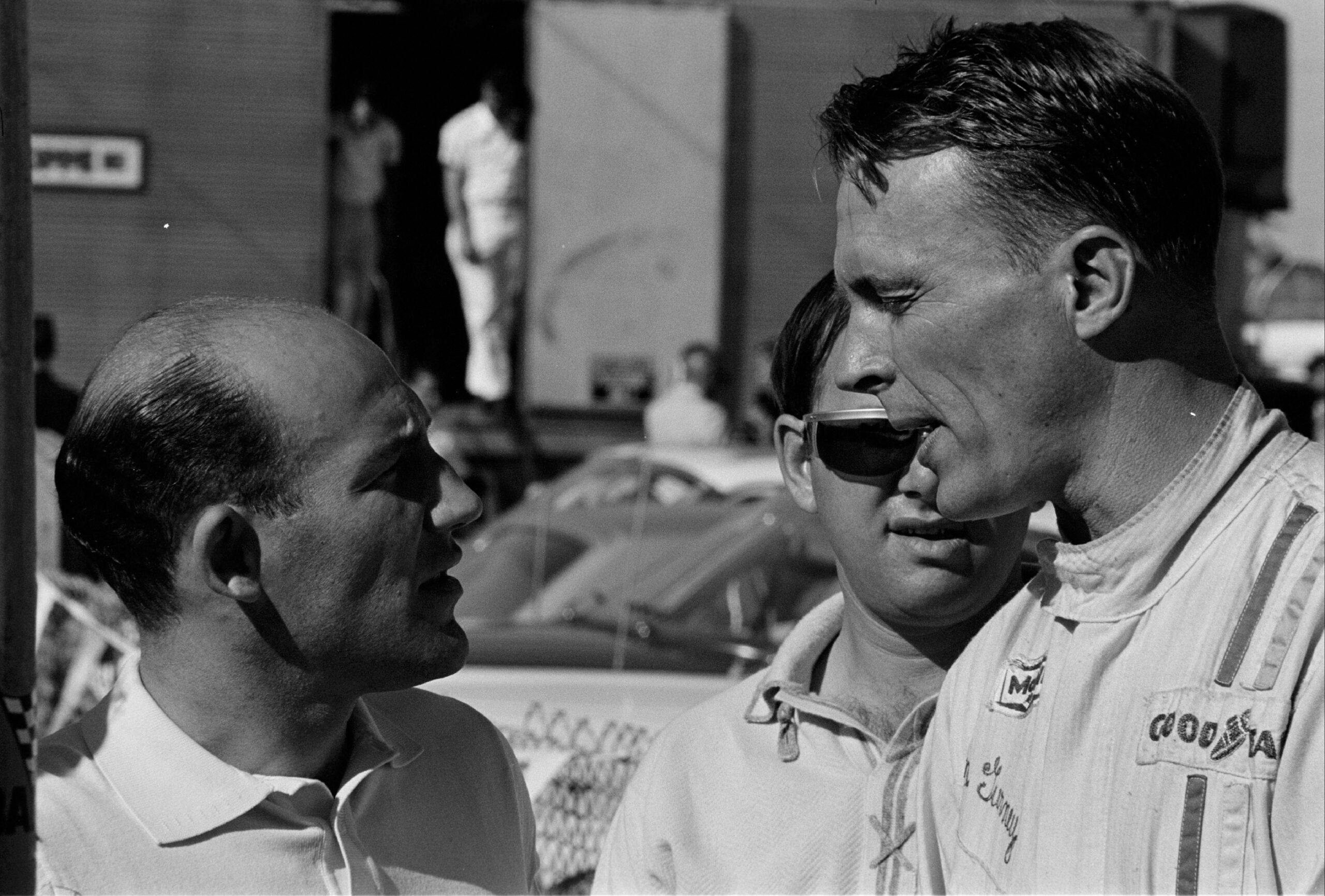

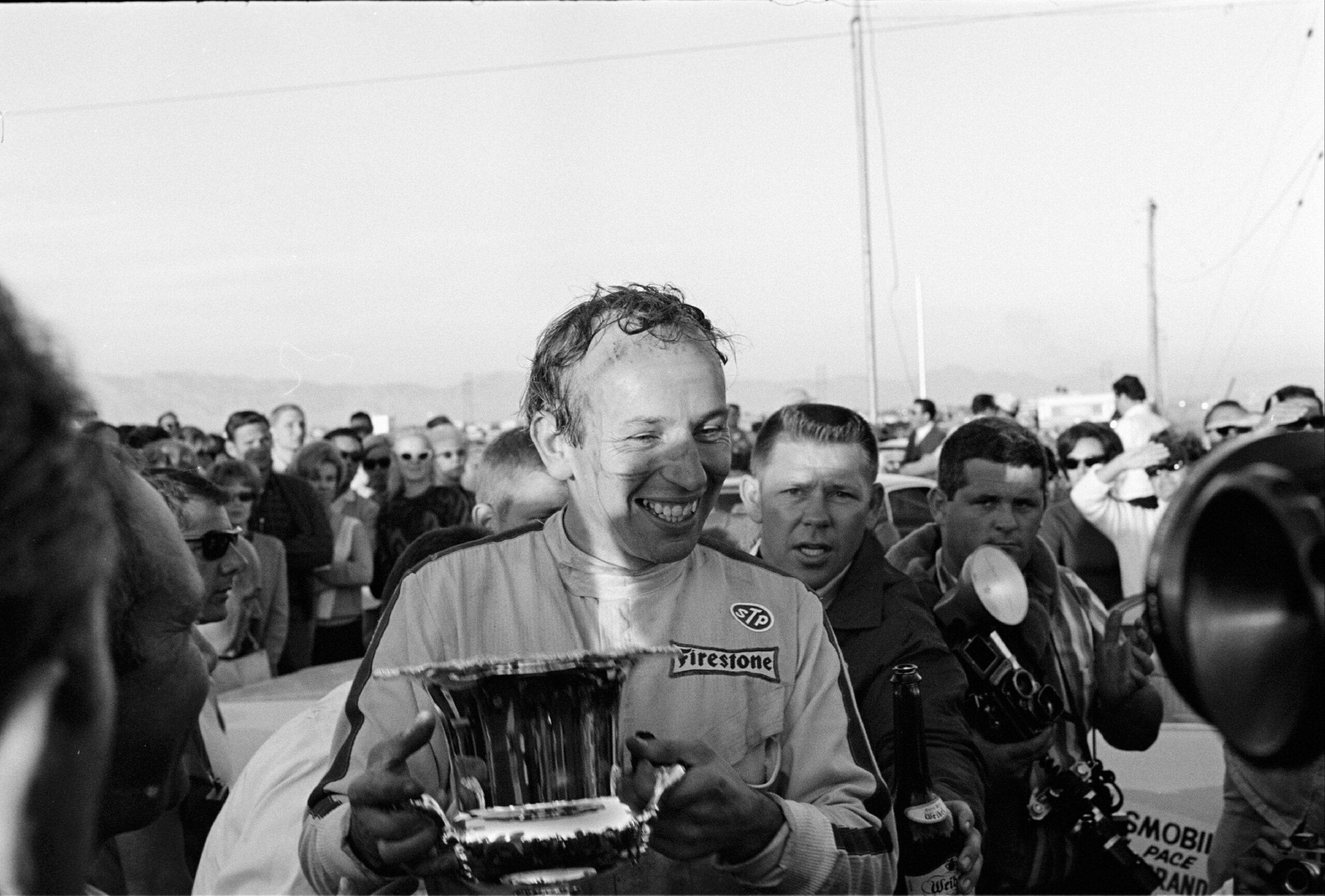


Greatest era in racing and it was just beginning. Later Porsche domination ruined Can Am quickly. LOVED the Chaparrals! Had a Cox gas powered one. The fuel ate through the plastic frame and engine mount…we were ‘on the trailer’ for good…
Love the Chaparrals, too! I have a poster of the 2F at the ‘Ring, in my office. I’ve seen those gas-powered Cox cars. So cool!
I thought anyone who’d seen all of Elvis’ movies would know about ’60s Vegas road racing! 😉
Viva Las Vegas (and, of course, Ann-Margret)!
Oh, yes! The blue Elva!
Her rival was a baby-blue racing car…
Too many cars ruined in that movie – cars that would be loved and coddled by someone today 😥
I’m pretty sure that’s Sterling Moss with Dan Gurney not Phil Hill. Hill had a lot more hair than Moss.
Good catch, Ronnie. Thanks. Sir Stirling it is!
You are Right. It IS Stirling Moss.
Thank you for the confirmation, René. And thanks for reading the piece!
I used to ride my trail 90 to watch the race,66,67,68.The only car I had eyes for were the Chaparrals.I also had the slot car and plastic models.I-even bought the hot wheels version.